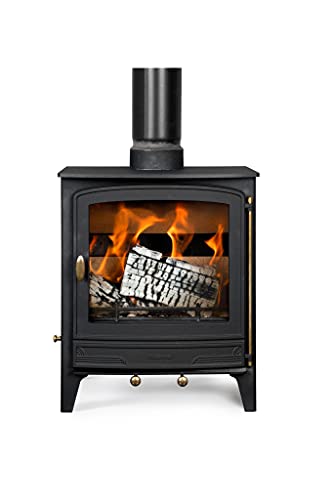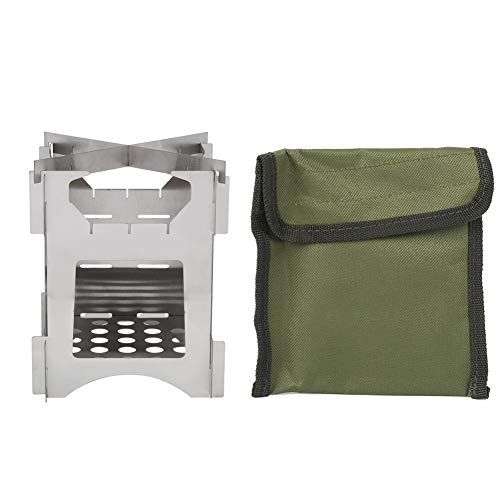"Ask Me Anything," 10 Responses To Your Questions About Wood…
페이지 정보

본문
 The Dangers of a Wood Burning Fire
The Dangers of a Wood Burning FireA wood-burning fire is a relaxing and comfortable experience. It also produces toxic combustion by-products. It is important to understand the way wood burns and how to use your fireplace properly.
 Choose seasoned or kiln-dried logs. The logs that are seasoned have less moisture, and they can burn hotter and longer than unseasoned logs.
Choose seasoned or kiln-dried logs. The logs that are seasoned have less moisture, and they can burn hotter and longer than unseasoned logs.Burning Time
The burning of wood to generate heat is a well-known and efficient method of heating. The fire can release pollutants both indoors and outdoors that are detrimental to the human body. A well-designed fireplace, when used with skill, can reduce the negative effects of burning wood.
The amount of time a wood fire lasts is determined by the degree of heat. The temperature of the fire can affect the amount of smoke generated, as well as the amount of carbon monoxide released. If the levels of carbon monoxide are high, they can hinder the escape of people from a burning structure. It is important to keep an uninhibited heat level on the fire to prevent this.
During the initial phase of the fire, volatile gases like methane and alcohol are released from the wood's cellulose. These gases are non-combustible or combustible, based on the moisture content and the pyrolysis temperature of the sample. The temperature of the pyrolysis increases up to 350 degrees Celsius. At this point cellulose begins to decompose and forms charcoal and tar. This process is known as wood pyrolysis.
Burning wood releases other toxic combustion products, such as dioxins and polyaromatic hydrocarbons and [Redirect-301] PAHs. PAHs are known to cause cancer and other ailments in animals and humans. They also can affect soil and water. To reduce the harmful effects of PAHs wood should be burned in a properly ventilated area.
A wood stove that has an extended burn capacity is able to maintain visible flames while using a minimum amount of fuel. This method involves laying wood with lighter kindling and larger pieces to stop the fire from burning out too quickly. This technique can be used to create a the appearance of a fire that produces high temperatures for use over the night or when you are at work.
The time it takes to burn a wood fire is based on a number cost of wood burning stove factors which include the moisture content of the wood. Dry wood will burn faster than damp wood. The absorptivity on the sample surface can also affect its burning time. Simms [59] found that the required heat flux to ignite oak and mahogany samples was significantly lower with coated surfaces than without them.
Temperature
The temperature of a fire is extremely crucial. The temperature of a flame can affect how quickly it burns and the amount of heat it creates. It also influences how dangerous it is to burn yourself. It also influences the amount of smoke that is produced. If there is a lot of smoke, it can irritate the throat and eyes which is why people should be careful not to breathe it in.
When wood is burned, it creates plenty of heat and can even reach high temperatures. The temperature of the fire will be affected by the type of wood and the amount of moisture. Wet wood, for instance, will burn at lower temperatures than dry wood. This is because wet wood can absorb more water and produce less heat. It is essential to burn dry wood. You must also make sure that the wood is properly seasoned prior to burning.
When the wood reaches its maximum burning temperature it will release lots of heat and ash. The amount of ash that is released will depend on the kind of wood being burned and the heat at which it burns. Some woods, such as oak and larch, release very little ash when they burn. Others, like birch, can create a large amount of ash.
As the wood burns it will go through a three-stage process known as pyrolysis. The process begins with the chemical reaction that converts the organic compounds in the wood into methane and carbon dioxide. The resultant gases are absorption by the air around. When the wood is heated the gases will rise and ignite the wood's surface, creating a flame that will heat the wood until it combusts.
It is essential to avoid touching the wood burning fire with bare skin, because it can cause burns. It is also important to avoid touching the fire with your naked skin as it could cause burns. Wearing gloves and working in an area that is well ventilated will lessen the risk of being burned. Wearing a mask is also recommended when working with wood-burning fires to prevent breathing in smoke.
Smoke
Wood burning fires generate smoke which is a mixture of gases and fine particles (also called particulate matter or PM) that are harmful air pollutants. The smoke from wood combustion may contain toxic organic compounds, such as formaldehyde, benzene and polycyclic aromatic hydrocarbons, and mineral particles such as potassium, calcium, and magnesium. These particles can trigger a variety of health problems that include cancer and respiratory diseases. When people inhale smoke from wood and inhale carbon monoxide (CO) which is an inert gas with no odor and color that can cause fatal poisoning in small amounts.
The smoke that is produced by a wood-fire comes mainly from volatile organic compounds (hydrocarbons) which are vaporized from the burning material. The smoke also contains some water vapor, the byproducts of incomplete combustion (such as creosote) as well as a small percentage of unburned material known as Ash.
When choosing the type of wood to burn in your woodstove or fireplace it is recommended to select firewood that has been seasoned. Split logs that were stored away from the elements and allowed to dry for a certain amount of time until they attain the moisture level of between 20 to 25 percent, will burn slower and produce less creosote. Knocking the log on both sides is a great method to determine the amount of moisture. A damp log will sound dull, while wood that is seasoned will sound sharp.
When the heat produced by wood fire draws air surrounding it The smoke and other byproducts of combustion are pushed out through the chimney. If the ventilation system of your home is not sufficient it could mean that the chimney is unable to draw enough air and could create an air draft that can cause the byproducts of the fire to accumulate inside the home. This could lead to an accumulation of carbon monoxide, as creosote and flammable cinders.
Smoke from wood-burning fires can be particularly hazardous to people over the age of 65, those with heart or lung diseases children, and outdoor enthusiasts. These people are more likely to suffer health issues from smoke from wildfires, such as COVID-19 symptoms, aggravated asthma, and chronic lung and heart diseases.
Safety
When using a wood burning fire, there are a few precautions to take to reduce the chance of accidents and fire damage. For instance you should utilize a fireplace or stove screen and keep anything that is flammable at least three feet from it. Carbon monoxide and Smoke detectors should be installed in your home to notify you when hazardous gases are detected. It is not advisable to leave a fire unattended as even a small flame can cause an explosive explosion. It is also recommended to use a metal ash bucket and a shovel for removing the ashes from your wood stove or fireplace. Keep it away from any flammable items.
Lighting the Fire
To begin a fire, put the dry and broken logs on top of an ash-covered bed. Then add a layer of twigs and kindling to the pile. Make sure there's enough space between each piece of wood to allow for air flow, as this will help prevent the fire from dying out too quickly. If you need help in getting your fire going, try adding a few firelighters to the mix.
Open windows to let the fire get the oxygen it requires to ignite brightly. This is especially important for modern homes that are often well-insulated and have no natural air circulation or draft.
Once the fire has established, you can add more wood pieces. It is important to remember that even mature hardwoods like oak and hickory produce plenty of creosote when they are burned.
Ideally, you should only use seasoned or kiln dried firewood for burning your fire, as it is less likely to cause creosote accumulation in your chimney. If you do have to use fresh or stoves newly cut firewood, make sure that you do so with great care, as it will generate more smoke and could cause more creosote.
- 이전글The Time Is Running Out! Think About These 6 Ways To Change Your 驗證資產和負債 24.04.03
- 다음글High 10 Key Tactics The pros Use For Casino Online 24.04.03
댓글목록
등록된 댓글이 없습니다.
